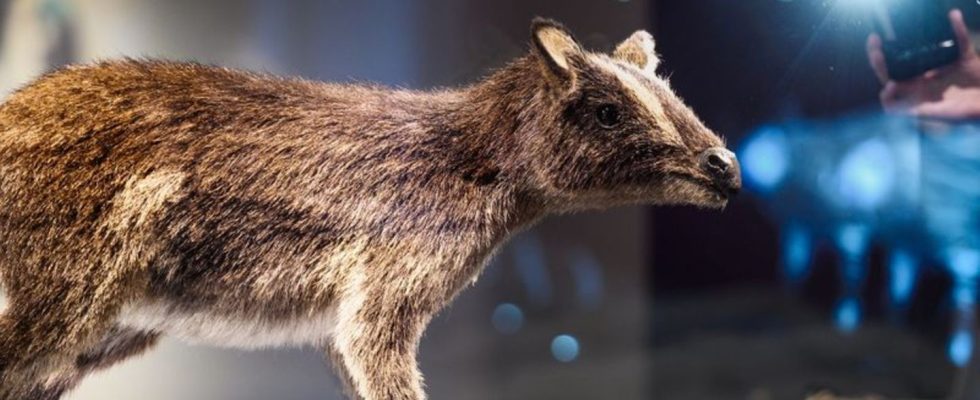Unesco World Heritage Site
Found in the Messel pit, most likely ancient horses
This is what the ancient horse might have looked like. photo
© Andreas Arnold/dpa
The Messel Pit is a true treasure trove of evolution. So far, around 60 completely preserved ancient horses have been discovered. Recently there was another spectacular find.
The mammal fossil discovered in the Messel pit in the summer is most likely another ancient horse. “The preparation is not yet completely finished,” said excavation manager Torsten Wappler from the Hessian State Museum in Darmstadt to the German Press Agency. It is a relatively small animal. “It was a young animal, in any case.” The fossil was discovered in the UNESCO World Heritage Site in the summer and was described by Wappler as a “spectacular find”.
What was spectacular about the discovery was the contents of the stomach. “We found four teeth in the stomach, possibly the animal’s milk teeth,” said Wappler. That’s so in Messel has not yet appeared. The teeth would look like those of a primitive horse. It still happens today that ungulates swallow teeth. “The ancient horses were actually herbivores.” According to Wappler, around 60 completely preserved ancient horses have been discovered in the oil shale in Messel.
Prehistoric horses are an extinct branch within horses. They lived in Central Europe about 50 million years ago and didn’t grow much larger than dachshunds. The Messel mine in southern Hesse with its important fossil finds was declared Germany’s first UNESCO World Heritage Site in 1995. The finds are evidence of a world long after the extinction of the dinosaurs and long before evolutionary history gave rise to Neanderthals or modern humans. The State Museum has the largest collection of Messel fossils.

